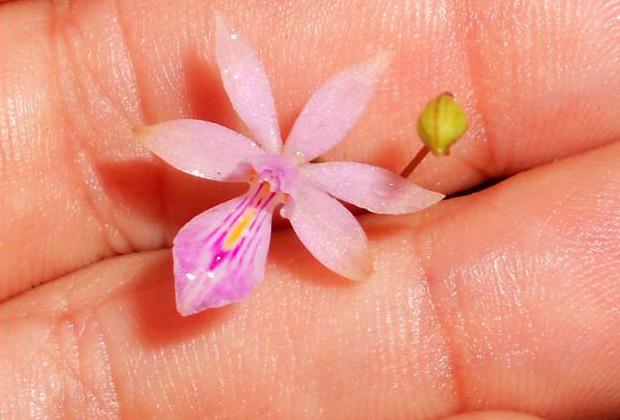Frander Brian Riverón Giró
Other projects
10 Apr 2017
Ecology and Conservation of Tetramicra malpighiarum, the Most Endangered Orchid of Cuba I
Tetramicra malpighiarum is an endemic and seriously endangered orchid, with only one confirmed population in Desembarco del Granma National Park, Cuba. The aims of this project are to extend the search for new populations in coastal areas of the country; expand and systematize environmental education activities with communities near to the current known population and possible new populations; continue taking demographic and ecological data of the populations, and take samples for future population genetic studies. The data collected during the project will allow knowing the current conservation status of T. malpighiarum and proposing viable and accurate conservation management strategies.

T. malpighiarum flower.
Tetramicra malpighiarum (Orchidaceae) is a Cuban epiphytic endemic species. It is categorized as Critical Endangered (CR), and only has one confirmed population of few individuals, located in "El Guafe", Desembarco del Granma National Park, in southeast Cuba. There is a record of a second population of this species in the northern coast of Ciego de Avila province, in "Las Mamitas". However, it have not been heard from this population since year 2000, and in recent field expeditions was impossible relocating it. The population of "El Guafe" is within Desembarco del Granma National Park; however, the area it occupies is in the public use zone, which limits its protection. This population is exposed to tourism development, illegal collection of individuals, forest fires and deforestation. These threats might be also affecting other populations not yet discovered in other areas of the country, especially considering that T. malpighiarum prefers to grow in coastal areas, which in Cuba are areas of great tourist interest.
Taking into account the above scenario it is imperative to extend the search for new populations of this orchid; expand and systematize environmental education activities with human communities near to the current population and possible new populations; continue taking demographic and ecological data of the populations, and take samples for population genetic studies. All of this will allow us to increase the knowledge about the species and propose viable and accurate conservation management strategies, in close collaboration with human communities.
This project represents the continuity of the previous Rufford Small Grant. It will allow systematizing the work developed in the first project, and achieving new results that combined with the previous ones will be fundamental for the conservation of T. malpighiarum. The information obtained will provide the tools to influence on the administrators of biodiversity in Cuba, to achieve more efficient protection mechanisms and to extend protection to areas where the species possibly inhabit, and that have been not yet discovered.